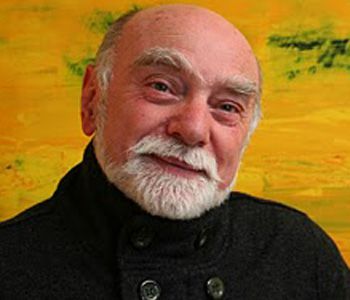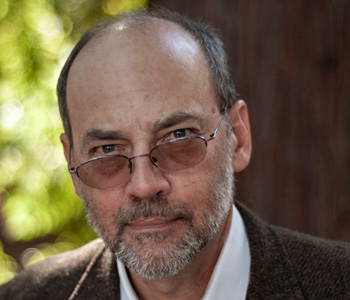Peleg, Yaron
Israeli Culture between the Two Intifadas: A Brief Romance
University of Texas Press
170 pages, 6 x 9 inches
ISBN 978 0292718777
The book examines Israeli culture in the 1990s between the two popular Palestinian uprisings, the intifadas, in 1987 and 2000, respectively. By looking at popular media and literature, I highlight the fundamental changes Israel has undergone from a socialistic and ideologically mobilized society until the 1980s, to a more open, international and capitalistic society in the 1990s and beyond. The book’s main thesis is that, beginning in the late 1980s, Israel experienced an “identity crisis” that included a reexamination of its creation story and a reevaluation of some of its foundational myths. Consequently, Israel transitioned into a post-Zionist or post-national stage that was marked by a genuine but ineffectual search for a new meaning. That soul searching, undertaken by young journalists and writers, was marked by a disengagement from direct political involvement and the adoption of a more passive resistance that was expressed by the cultivation of romantic escapism, especially as a cultural stance.
Israeli Culture between the Two Intifadas tries to chart the latest development in Israeli cultural history. Set within the larger context of the country's history, the book examines Israeli culture at a critical crossroads. It looks at the challenges of the Oslo Peace Accords in 1993,which marked the first opportunity of real peace with Israel’s Arab neighbors. Both the allure of a near peace and the gradual dissipation of that dream toward the end of 1990s elicited complex cultural responses which the book examines and illuminates.

Postmodernism undermined Zionist ideology by its very essence as a deconstructive critique.
The book relates primarily to theories and practices of postmodernism and globalization, two of the most central intellectual trends of the last few decades. The book shows how the arrival of postmodern critique in Israel in the early 1990s and its adoption by a growing number of academics and other critics changed the intellectual climate. This change, among others, opened up the culture to outside influences and eventually led to the reexamination of many of the country’s old, hallowed truths about its heroic establishment, about the relations between its various immigrant communities, and about the relations between Jews and Arabs. Postmodernism undermined Zionist ideology by its very essence as a deconstructive critique. Whereas Zionism offered a unified theory about Jewish history as well as a practical solution to the Jewish problem it raised, postmodernism undermined its raison-d’être by doubting the need for a Jewish state on philosophical grounds. The fact that Israel’s history, like that of any other country, was a checkered one, filled with unflattering chapters, was used by the new critics to undermine that history and in some respects also delegitimize it. Israeli Culture between the Two Intifadas shows how these complex developments led to the growing disillusion of younger Israelis in the 1990s with their state and to their search for an alternative national narrative that would not be as loaded or as controversial.
Globalization also played a role in this dynamic since it enabled Israel to take a more active part in world or global culture. The inspiration for some of the new alternatives to Israel's own, familiar, old and tired reality came precisely from outside, from global culture. As the economy soared, the standard of living rose, and the media was deregulated, Israelis were progressively more exposed to popular global culture, through the consumption of luxury goods, through travel, and through various entertainment media products (TV, films, commercials). Chief among these cultural alternatives was the lure of romance as the central idiom of western popular culture. Thus, young Israelis who resented the dreary Middle Eastern reality but were too dispirited to get politically engaged in order to change it, preferred instead the comfort of romantic escape. The book shows how in the 1990s several leading writers abandoned the preoccupation with the central affairs of the nation, and developed instead an alternative “literature of romantic relationships.”
Israeli Culture between the Two Intifadas came out of my two previous research projects, about homoeroticism in Hebrew culture and about Orientalism in early twentieth century Hebrew culture and combines my interest in Jewish sexuality and Israel’s place in the modern Middle East.
Chapter 2, titled “Popular Media in a Post National Age” (pages 31-63 in the book) would be most readily accessible and intriguing for readers who know little about modern Israeli culture. The chapter talks about the media revolution in Israel in the late 1980s and beyond. It uses one of the most influential newspapers that were published in Israel at the time, the local Tel-Aviv weekly Ha’ir, as an example of the deep changes the country was undergoing at the time. The chapter focuses on the economic changes that brought about a consumer revolution in the life of the country and the many ways this revolution influenced Israeli society, its politics and its culture.
The chapter’s main argument is that the opening up of Israeli markets to goods and ideas from outside also changed the ways Israelis looked at their own society, their own history, and their own politics. The freer market that gradually grew in Israel in the 1980s and 1990s subjected many old truths to a new examination and to new evaluations. As a result, some of the most accepted notions were either changed or discarded altogether by a growing number of Israelis. These included Israel’s responsibility for the plight of Palestinian refugees, the painful ways the country absorbed various immigrant groups, including Mizrahi Jews and Holocaust survivors, and other aspects of the State’s building process which were reevaluated from the distance and vantage point of time.

The opening up of Israeli markets to goods and ideas from outside also changed the ways Israelis looked at their own society, their own history, and their own politics. The freer market that gradually grew in Israel in the 1980s and 1990s subjected many old truths to a new examination and to new evaluations.
Israeli Culture between the Two Intifadas attempts to chart one of the latest stages in the development of Israeli culture. It is one of the first books to do so in the English language. Because of time and distance considerations, even in Israel these perspectives have only been offered in the last decade or so. The book also claims that the great window of opportunity for a grand and lasting peace between Jews and Arabs in the Middle East has largely been closed since the breaking of the second Palestinian intifada in 2000. That event plunged the Middle East back again into a tribal war which seems fiercer and more entrenched than before, on both sides. However, considering the great hopes of the Oslo years in the early 1990s, and looking at the great tragedy that followed the shattering of those hopes, I attempt to offer a perspective as well as a lesson and an incentive for a rekindling of those hopes sometime in the future.




We don't put paywalls. We don't distract you with ads. We don't sell your data.
Please help to keep this running!